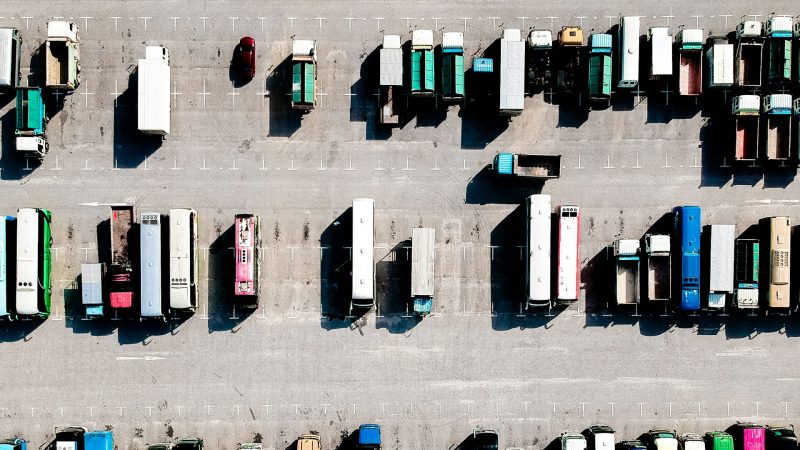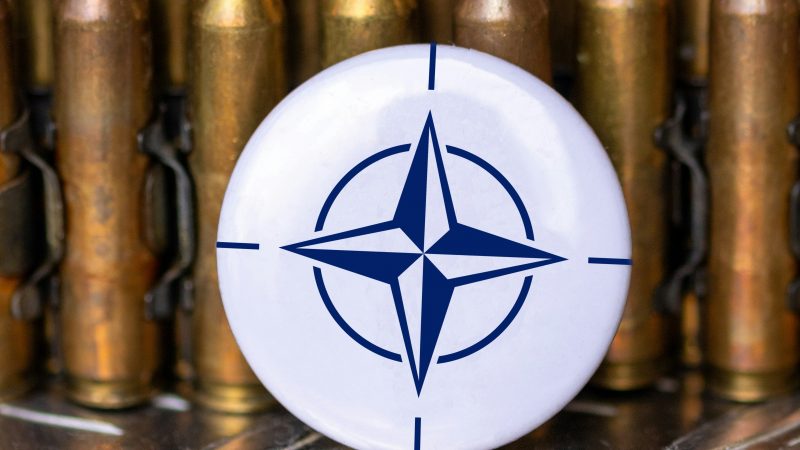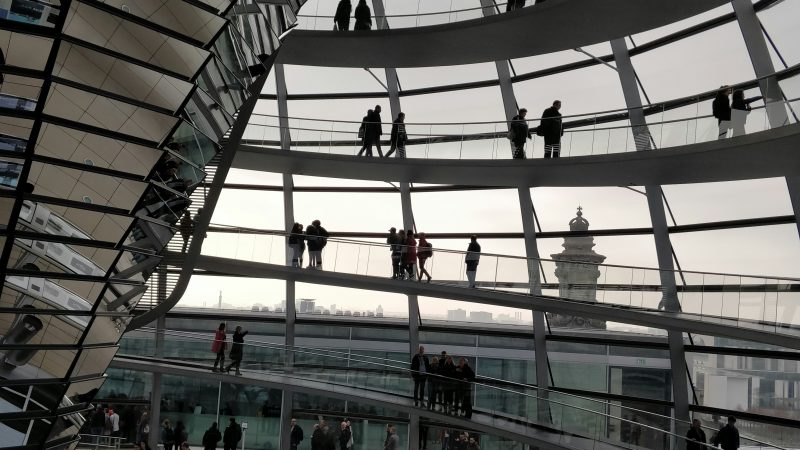The Roots of Europe’s Refugee Crisis
As European leaders struggle to respond to the growing number of refugees crossing their countries’ borders, divisions persist among EU member states over how to manage the continent’s worst humanitarian crisis since World War II.
Meanwhile, the Arab region has come to host more than one-third of the world’s refugees, with Lebanon and Jordan under significant strain. War has forcibly displaced more than 12 million Syrians in the past four years alone.
In this Q&A, Carnegie experts trace the evolution of the crisis. They analyze how it is impacting political stability in the Middle East and Europe, and what leaders should do about it.
- What’s driving the refugee flows?
- How are the refugee flows changing the Middle East?
- How have countries in the Middle East and the broader international community responded to the crisis thus far?
- How are the refugees traveling to Europe? Is the flow going to abate any time soon?
- Was Europe prepared?
- How will this crisis impact political stability in Europe?
- What kind of policy responses are needed now?
What’s driving the refugee flows?
Maha Yahya: The Syrian crisis is a huge driver. Globally one in five refugees is Syrian. They augment millions of Libyans, Sudanese, Somalis, Iraqis, Afghans, Yemenis, and more fleeing conflicts in their own countries.
One of the most significant factors driving the recent surge of refugees is the sense of hopelessness that now prevails among Syrians. After four years of war, and with no political or diplomatic breakthrough in sight, their future in Syria looks bleak.
This reality is also sinking in among Syrians hosted in neighboring countries. There is a sense of despair, particularly in Jordan and Lebanon, where being a refugee means living in limbo: unable to work, surviving on aid, and having one’s movements restricted. There is simply no prospect of establishing any kind of future for oneself or one’s family. The shortfall in funding for humanitarian support is also life threatening for many.
The majority of refugees headed to Europe are fleeing directly from Syria, but some are also leaving Lebanon with indications that daily, hundreds are embarking on the treacherous trip. There is a rush in particular among Syrians in the professional middle class—or what is left of it. They are risking their lives and the lives of their children to reach Europe, which offers the possibility of security, safety, and eventually building a future. Young men are also leaving to avoid now-mandatory military conscription by the Syrian army and to escape a war of which they want no part.
Syria is the biggest but not the only driver. Other conflicts, including those in Somalia and Eritrea, have displaced millions as a result of identity-based persecution and repression. Practical considerations are driving this massive movement of people, including the relative ease of the route via Turkey and Greece to the Balkans. The price of transport has also dropped from an estimated $5,000–$6,000 to $2,000–$3,000 per person. And the collapse of the central state in Libya opened a new route for economic migrants from Africa.
On the regional front, the willingness of Gulf countries to provide financial assistance for humanitarian support and their reluctance to host refugees means that those fleeing war are limited in their choice of safe havens. In this context, Europe can offer stability and prospects for a future that no other place can.
How are the refugee flows changing the Middle East?
Maha Yahya: Beyond the significant humanitarian aspects of this crisis, these massive population shifts are dramatically altering the political, economic, social, and cultural trajectories of individual countries and the region as a whole. Forced displacements and population transfers based on ethnic and sectarian identities are reconfiguring the political maps of Syria and Iraq and threatening to undo the social orders of both Lebanon and Jordan. They are also leading communities searching for ways to protect themselves to militarize.
Meanwhile, the crisis is generating a massive new underclass of impoverished citizens, jeopardizing the future of generations, and placing some at risk of radicalization. Refugees and internally displaced persons are living in a state of exception, pushed to the fringes of society, unable to reconstitute their lives or make a gainful living. There has been a dramatic rollback of development gains in areas such as education, healthcare, and food security, as close to 80 percent of Syrianshave slid into poverty, 9.8 million are food insecure, and around 2 million children are left without education. In host countries, there has been a race to the bottom as the most impoverished refugees compete with equally disadvantaged citizens for scarce resources.
In this environment, refugees are pushed to make choices that can prejudice their futures, including removing children from school, acquiring astronomical debt, and becoming involved in illicit activities. If left unaddressed, this will trap the region in a cycle of vulnerability for decades to come.
How have countries in the Middle East and the broader international community responded to the crisis thus far?
Marwan Muasher: Both Jordan and Lebanon, the two states under the most strain in Syria’s neighborhood, have done remarkably well in response to the refugee crisis, considering its magnitude and their resources. They have not closed borders and have provided whatever relief they can to the refugees. Yet, this influx is clearly a significant problem for these countries.
Although some refugees work illegally because they have to in order to survive, wages are far below what could be earned through legal employment if that were permitted. There are valid arguments calling on the Jordanian government in particular to allow refugees to work in certain sectors that employ foreign workers anyway, as this would allow the refugees to be more self-sufficient, would reduce tensions between refugees and locals as well as radicalization trends, and would benefit the local economy.
The sheer scale of the crisis is also an issue. Lebanon, a small country with a native population of less than 5 million, has over 1 million Syrian refugees. Jordan, with a population of less than 7 million, is host to over 600,000 Syrian refugees, in addition to an estimated 800,000 Syrians that were living in the country before the crisis according to the government.
And these two countries were strapped economically even before the refugee crisis. Public debt and unemployment levels were both high. They do not have the kind of financial resources or capacity that European countries have.
Most of the aid efforts the international community has undertaken to date have focused on humanitarian relief. And food and shelter for refugees is certainly needed, particularly as winter approaches.
But countries like Jordan and Lebanon need more than just food and shelter for refugees. They also need assistance directed toward empowering the refugees in the long term. There has been little focus on education or on other steps that would ensure that these refugees have the necessary skills to make it in life and are not radicalized.
Both Europe and the United States have taken a backseat in response to the crisis in the region and have let Syria’s neighbors deal with it. But it can no longer be ignored.
How are the refugees traveling to Europe? Is the flow going to abate any time soon?
Marc Pierini: This year’s surge of migrants to Europe is specifically composed of asylum seekers, and the emergence of effective and tech-savvy networks of traffickers is enabling their journeys.
These asylum seekers are absolutely determined to make it to Europe, so to speak, irrespective of the dangers and difficulties involved. They are also willing to pay intermediaries astounding amounts of money to make the journey. Based on the number of asylum seekers who have been registered in the EU from January to June 2015 and a conservative estimate of €2,500 ($2,800) for the journey from Syria/Turkey to the EU, this makes for a total amount of over €1.0 billion for the half-year period. And traffickers are becoming increasingly more sophisticated.
Meanwhile, Turkey, a transit country on refugees’ journeys to Europe, has not thoroughly attempted to control the movements of refugees along the Aegean coast. Authorities also tend to turn a blind eye to trafficking and to the growing business of forging Syrian passports.
Turkey has a new responsibility in this difficult crisis. Although the government complains about not having received enough assistance from the EU over the past several years, it declared in 2011 that it would not accept assistance according to EU methods; it would only take assistance in the form of blank checks made out to its emergency agency. But Turkey cannot just sit on the sidelines and watch the massive social and political destabilization of the Europe it has sought to join.
The current refugee crisis in Europe is not about to abate. The main reason is that there are millions of refugees unable to return home: from Syria alone, there are 4 million people in neighboring countries and nearly 8 million internally displaced.
Another important reason is that the Russian military buildup in Syria will inevitably generate the fear that there will be more fighting and more casualties, causing even more people to seek refuge outside of Syria and those who have left to stay away.
In addition, the fact that Germany expects to receive 800,000 refugees gives hope to asylum seekers that there is a reasonable chance to make it to Europe, which they see as a safer haven than any of the other options (such as the Gulf) in terms of security, rights, and opportunities.
Faced with their current situation, asylum seekers generally think that there is nothing to lose in undertaking the dangerous journey.
Was Europe prepared?
Jan Techau: At the analytical level, Europe was not unprepared for the large stream of refugees that developed into a trek of biblical proportions over the summer. Experts from various policy fields (migration, security, development, the environment) had frequently warned about the risk of unchanneled mass migration toward Europe.
But politically, the EU was completely unprepared. Knowledge did not translate into action.
More importantly, the crisis hit Europe so hard because at its root is a simultaneous long-term public policy failure in about a dozen policy fields. From immigration to integration policies, from border control to the fight against organized crime, from humanitarian aid to internal solidarity and burden sharing, from trade policy to development cooperation, from military interventions to the European Neighborhood Policy—Europe has failed so consistently and so comprehensively that fixing the multilayered issue is one of the most complicated and convoluted tasks Europeans have ever had to face collectively. Europeans have been oblivious to the scope of their failure, so they are equally overwhelmed by the size of the crisis this failure has created.
Politicians have especially avoided the integration part of the refugee issue. Partly, this has to do with ideology. The political Left has steadily argued against immigration policies because it fears that establishing fixed rules will limit migration. The Right has done the same thing but for the exact opposite reason: it fears that systematizing migration will only open the floodgates. This constitutes an informal grand coalition against pragmatic problem solving.
Then there are the emotional identity issues. Few other issues have triggered as many as this one. And few other issues have triggered as determined a reaction to protect the national interest as the massive influx of strangers into the homeland.
Countries with well-developed immigration policies, such as the UK, were better prepared. Others, where no tradition of integrating large numbers of foreigners into the mainstream exists—such as the Czech Republic, Hungary, and Romania—balked at the prospect of taking a share of the refugees in.
As a consequence, organizing a roughly balanced burden sharing among member states became hugely difficult. An East-West division emerged. Despite a compromise on the issue forced through the European Council, tensions remain strong, and decisionmaking will continue to be difficult.
Identity politics and anti-EU sentiments had already been rife before the refugees arrived at Europe’s doorstep. Trying to make the case for the integration of hundreds of thousands of refugees into host societies under today’s circumstances is especially hard.
How will this crisis impact political stability in Europe?
Stefan Lehne: Crises bring out the best and worst in people. The sudden mass influx of refugees has triggered an amazing readiness to help as well as outpourings of xenophobia and fire bombings of refugee accommodations. Which type of response prevails will depend to a large extent on political leadership.
Most experts agree that Europe needs immigration to compensate for its deteriorating demographics, to regain growth, and to maintain its welfare systems. The current wave of refugee arrivals is therefore in the longer term a good thing for Europe.
The problem is that at this point the process is utterly chaotic. Many people experience masses of foreign people marching through Europe as a threat to their established way of life.
Populist movements exploiting these fears are therefore gaining ground in many countries. For these groups, anti-immigration feelings go hand in hand with rejection of the EU, which is blamed for this loss of control.
Mainstream parties waver between making the case for welcoming the refugees (in particular in Germany, where for historical reasons the populist Right is taboo) and restrictive policies catering to fears in the population. As politics remain largely national in Europe, these parties too are tempted to reestablish control through national means—hence, the acute threat to the Schengen system.
If current trends continue, tensions in the member states and acrimony among EU governments are bound to increase. That is why Europe needs to turn the chaotic influx of people into a well-managed process. This involves reestablishing control over the EU’s external borders, harmonizing asylum policies, and agreeing on a fair way to share the burden.
While this will be very difficult, it is still the easy part. The real task is to effectively integrate the new arrivals and avoid the emergence of ghettoes and parallel societies. Only thus can Europeans preserve the mutual trust on which their way of life rests. There is no greater challenge confronting Europe today.
What kind of policy responses are needed now?
Pierre Vimont: Appropriate responses can only be defined with an accurate assessment of the challenges raised by the current crisis. The issue is therefore how to address the despair-filled future faced by migrants and to propose responses to the short-term urgencies while also tackling the more structural problems.
In the short term, the first priority for Europeans is to get their house in order and abide by their own internal rules and international conventions with a greater sense of solidarity and responsibility. Then Europeans should increase their engagement with the frontline nations—not only Jordan, Lebanon, and Turkey, but also Ethiopia, Kenya, and many others—that have been sheltering up to now much of the migrant population.
If political refugees are to be convinced to remain in transit countries, they should be provided a decent existence with some realistic prospects for food and healthcare, temporary employment, and education for their children. Additional action should also be pursued in Syria through the establishment of humanitarian zones accepted by all sides.
These efforts must be completed by addressing the root causes of the crisis with concrete deliverables. On Iraq, Libya, and Syria, diplomatic efforts among international partners should be accelerated, building on the work already done by the UN and bringing in the main regional players that have so far resisted any real concession. Why not host an international conference dedicated to the security of the entire Middle East? Such a conference could deal with the current and various regional crises to convince Saudi Arabia and Iran to join in a balanced deal, taking into account their diverging national interests. Other crises in Yemen, northern Nigeria, and the Sahel region should benefit from the same attention because they all carry a risk of increasing the flow of migrants.
Acting on root causes also means making some serious effort to offer economic perspectives for migrants from Africa or South Asia. Improved circulation of remittances, engagement of diasporas in productive investments in countries of origin, support for young entrepreneurs, and, more generally, dedicated programs for creating jobs where refugee communities are currently located or where migrants would be reintegrated when they return to their home countries—all of these actions should be encouraged as proof of the willingness of the international community to tackle migration challenges.






